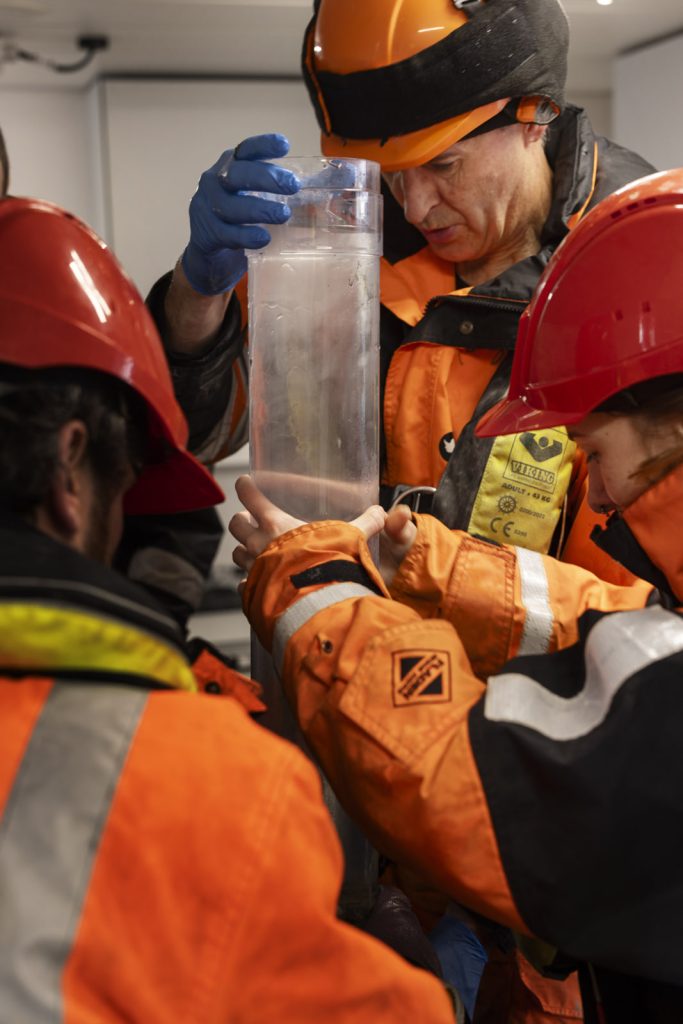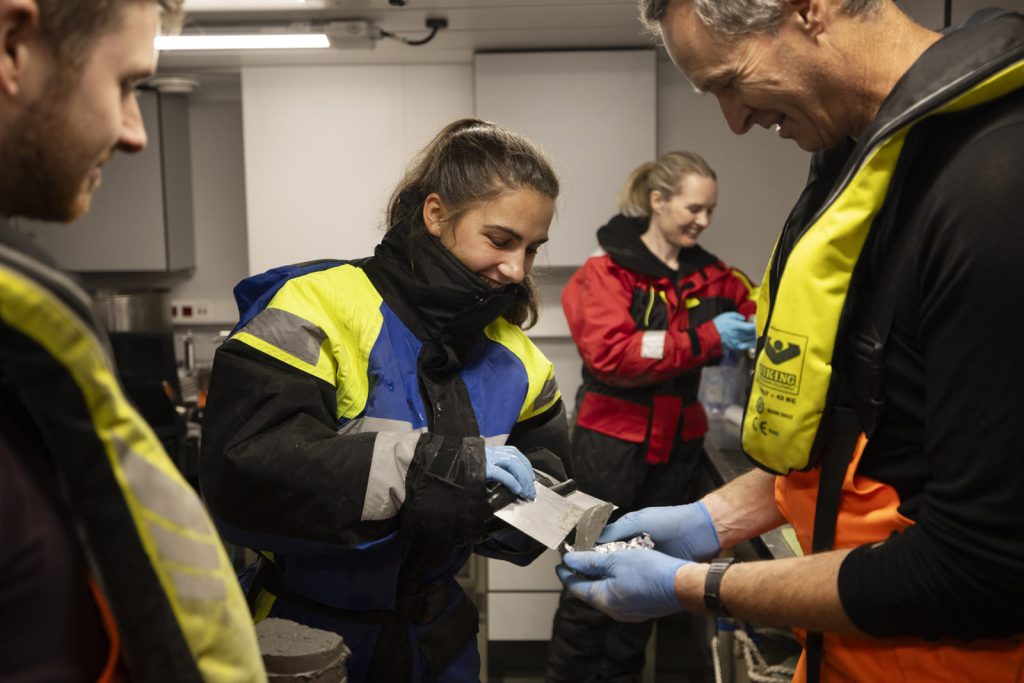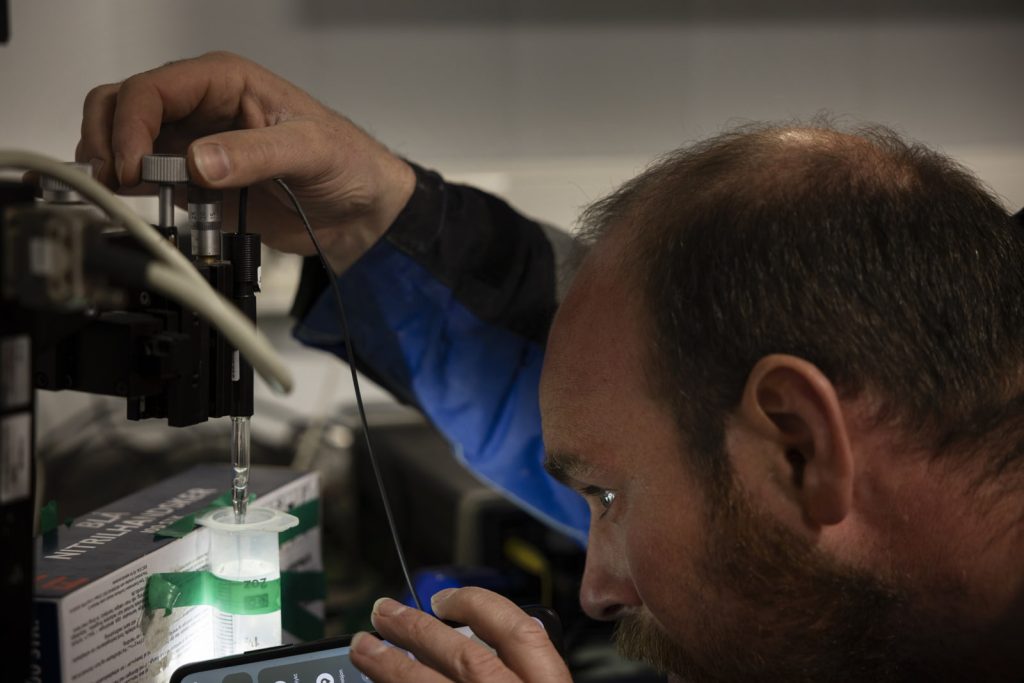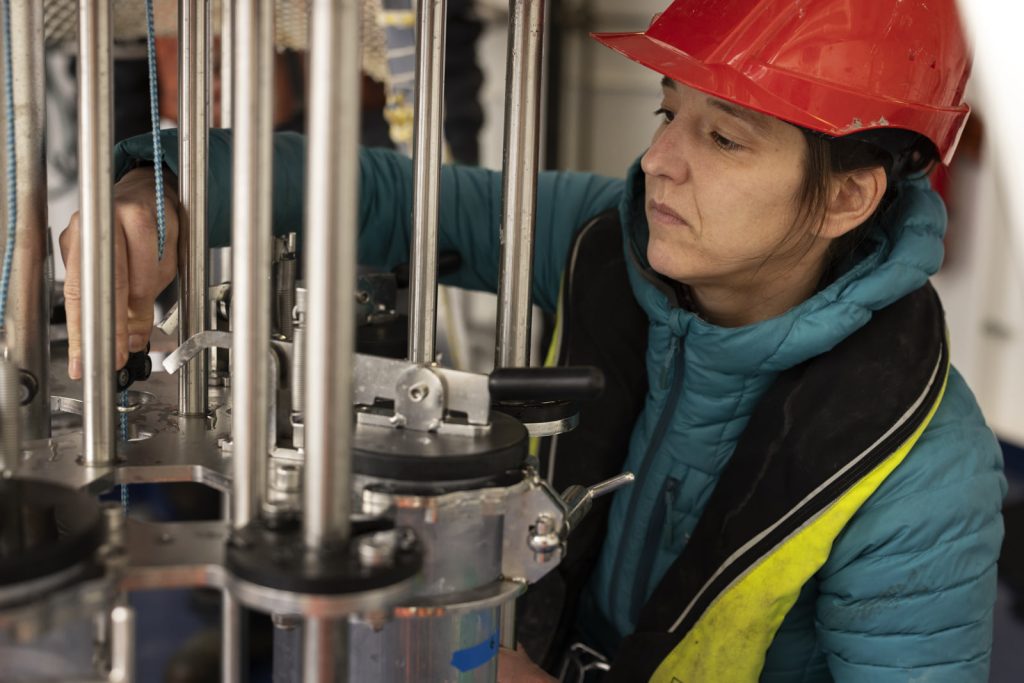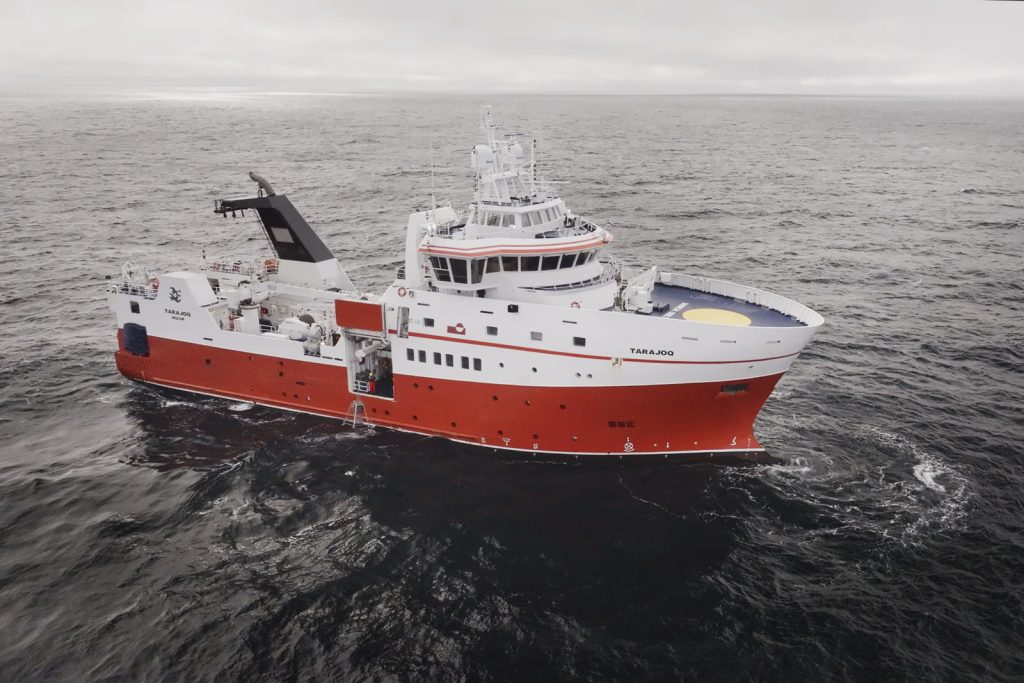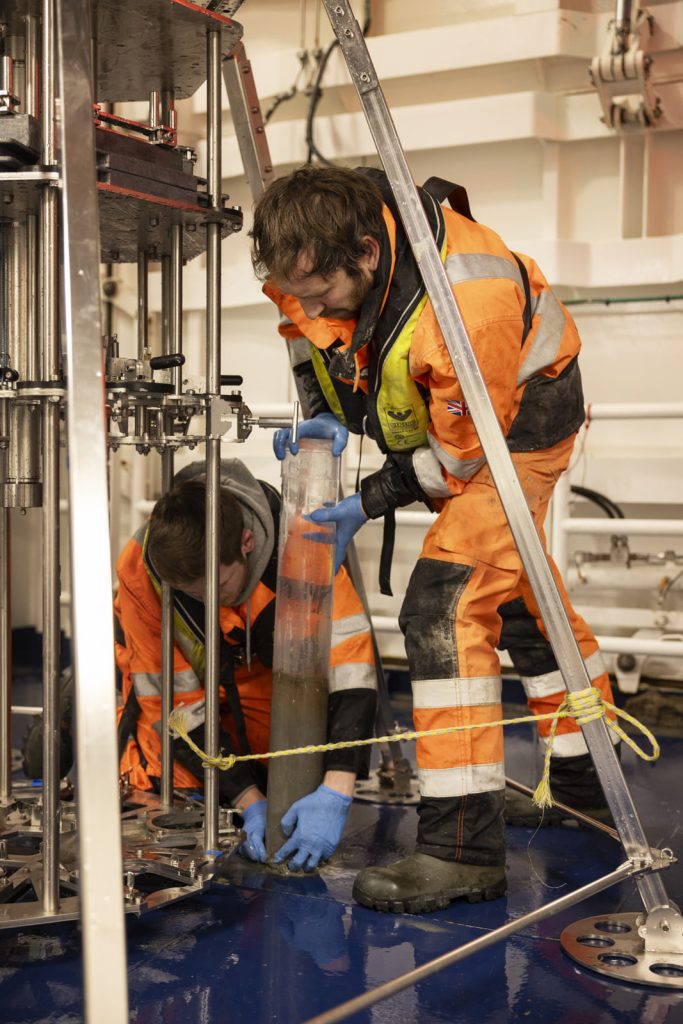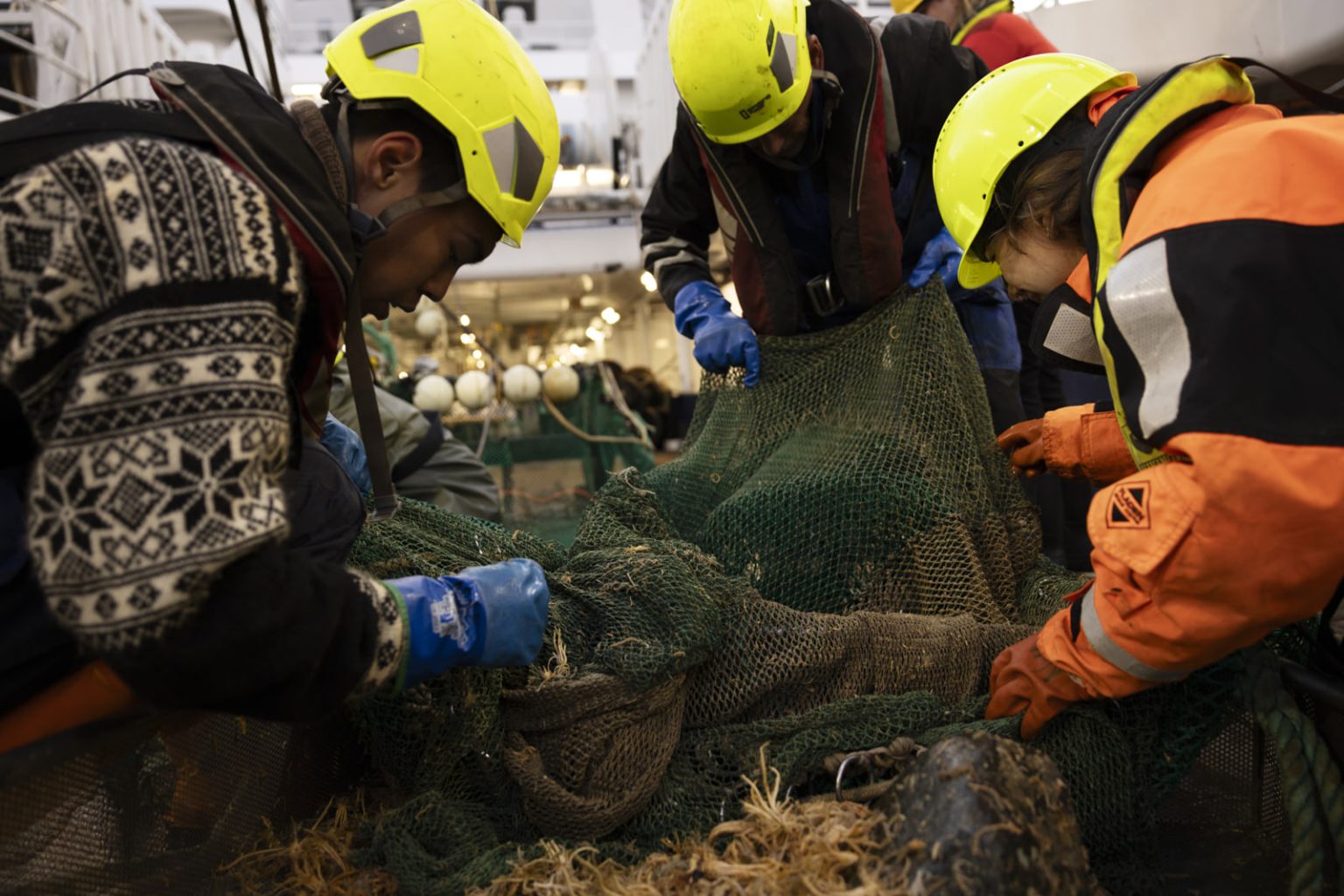POMP scientists from the Greenland Institute of Natural Resources (GINR), the British Antarctic Survey (BAS), and the Marine and Freshwater Research Institute (MFRI) of Iceland have been exploring the East Greenland Shelf as part of the Deep Trace cruise on the GINR vessel RV Tarajoq.
Throughout this expedition, researchers have been studying seafloor biodiversity, measuring the productivity of the water column, and collecting sediment cores. These sediment cores will be later analysed for both their organic and inorganic carbon content, which will help determine how much carbon is being stored in the Arctic seafloor.
Additionally, researchers are also measuring the oxygen penetration layer in the sediment. This type of data gives an indication at which depth in the sediment the carbon is being sequestered. Scientists have also recovered intertidal algae at a depth of 1300 meters on the continental slope, providing a clear indication of the importance of macroalgal carbon transport in polar regions.
Stay tuned for more updates as our scientists continue to collect data and make new discoveries about the polar regions of our planet.

